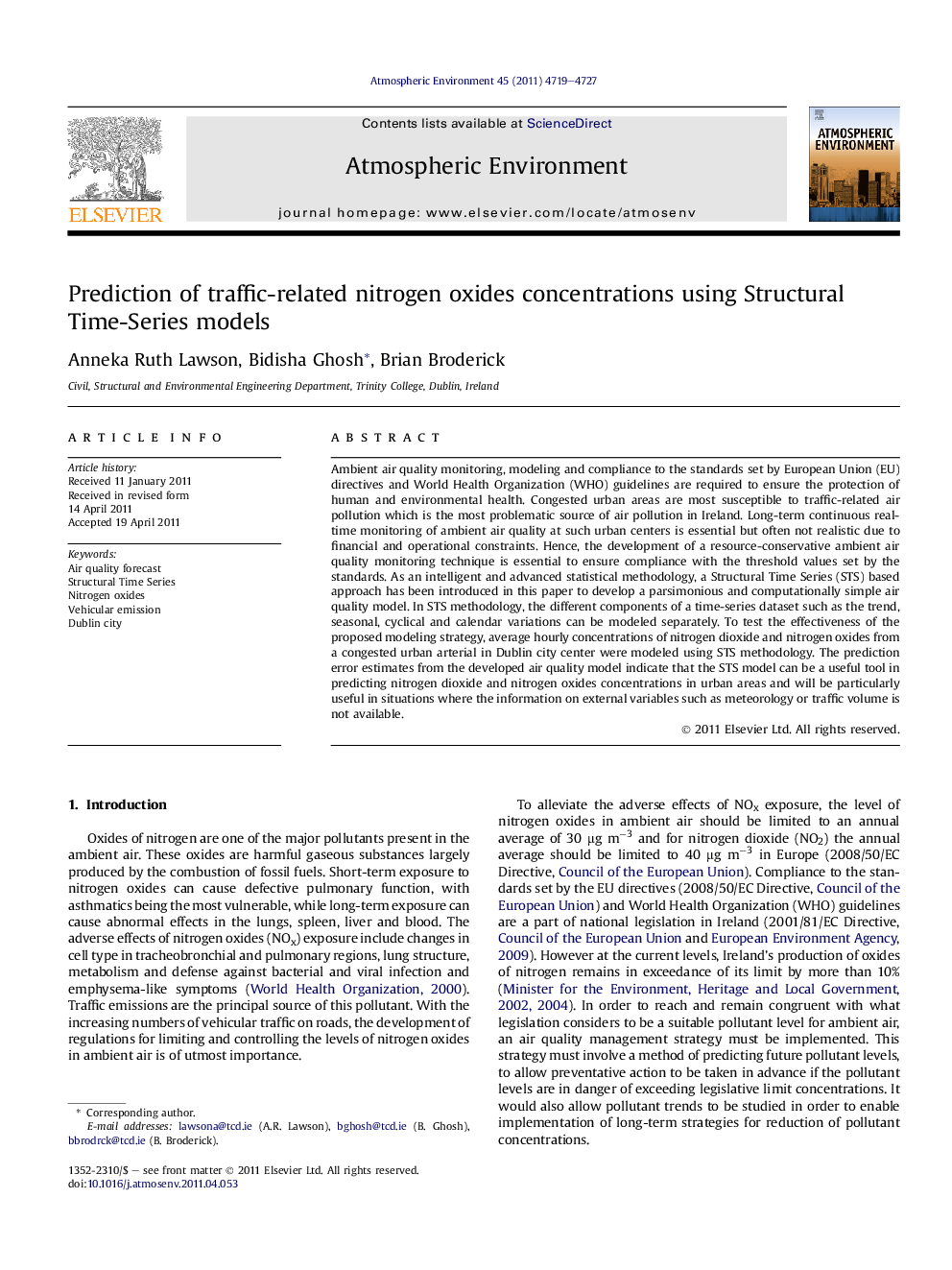| Article ID | Journal | Published Year | Pages | File Type |
|---|---|---|---|---|
| 4439767 | Atmospheric Environment | 2011 | 9 Pages |
Ambient air quality monitoring, modeling and compliance to the standards set by European Union (EU) directives and World Health Organization (WHO) guidelines are required to ensure the protection of human and environmental health. Congested urban areas are most susceptible to traffic-related air pollution which is the most problematic source of air pollution in Ireland. Long-term continuous real-time monitoring of ambient air quality at such urban centers is essential but often not realistic due to financial and operational constraints. Hence, the development of a resource-conservative ambient air quality monitoring technique is essential to ensure compliance with the threshold values set by the standards. As an intelligent and advanced statistical methodology, a Structural Time Series (STS) based approach has been introduced in this paper to develop a parsimonious and computationally simple air quality model. In STS methodology, the different components of a time-series dataset such as the trend, seasonal, cyclical and calendar variations can be modeled separately. To test the effectiveness of the proposed modeling strategy, average hourly concentrations of nitrogen dioxide and nitrogen oxides from a congested urban arterial in Dublin city center were modeled using STS methodology. The prediction error estimates from the developed air quality model indicate that the STS model can be a useful tool in predicting nitrogen dioxide and nitrogen oxides concentrations in urban areas and will be particularly useful in situations where the information on external variables such as meteorology or traffic volume is not available.
► First successful application of Structural Time Series predicting ambient NOx and NO2 levels. ► Road-side measurement of pollutants from the city center of Dublin used for validation. ► One-step and multi-step ahead forecasts with high accuracy achieved. ► Individual tracking of temporal evolution of pollutant concentrations achieved. ► Particularly useful when meteorological or emission data is unavailable.
